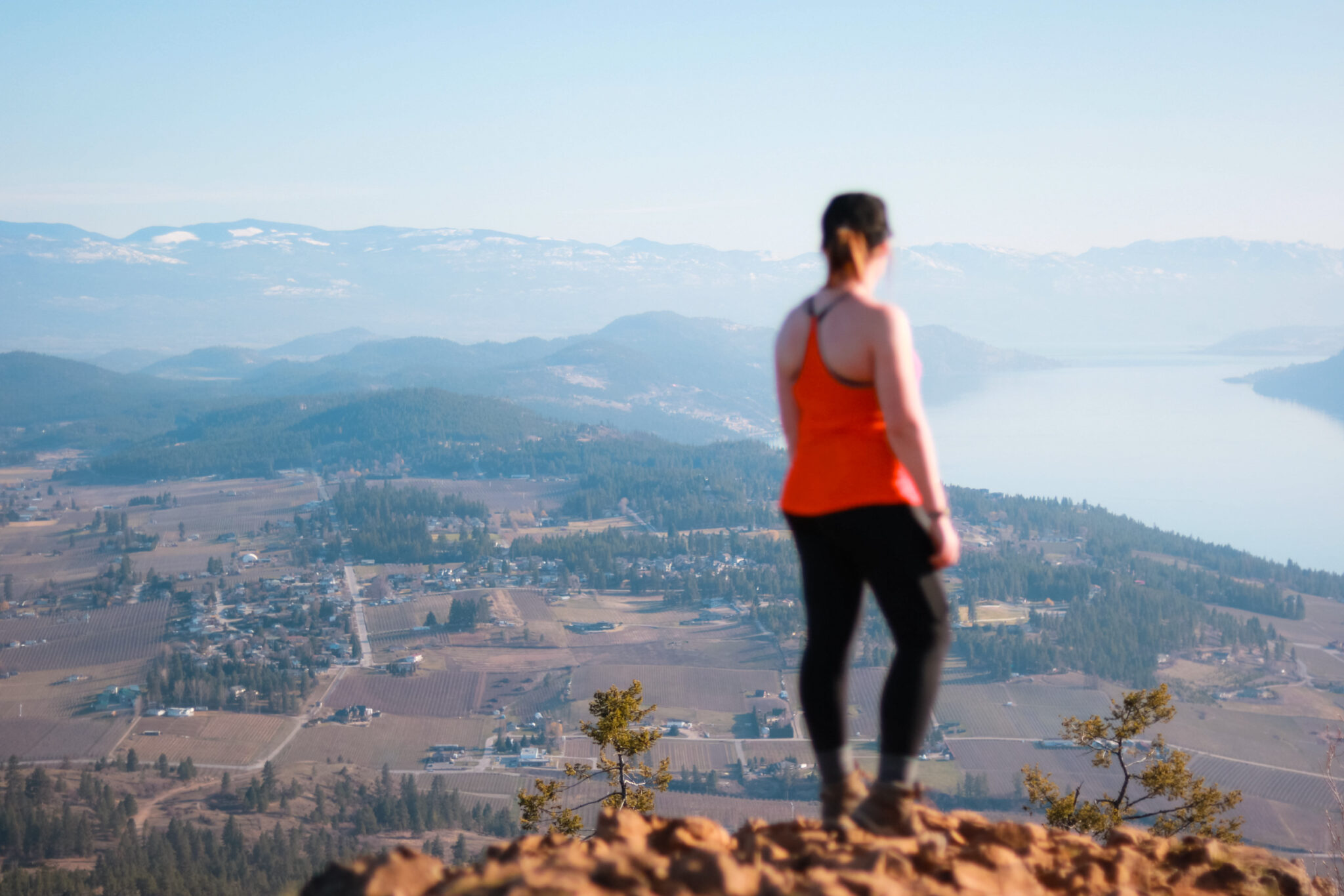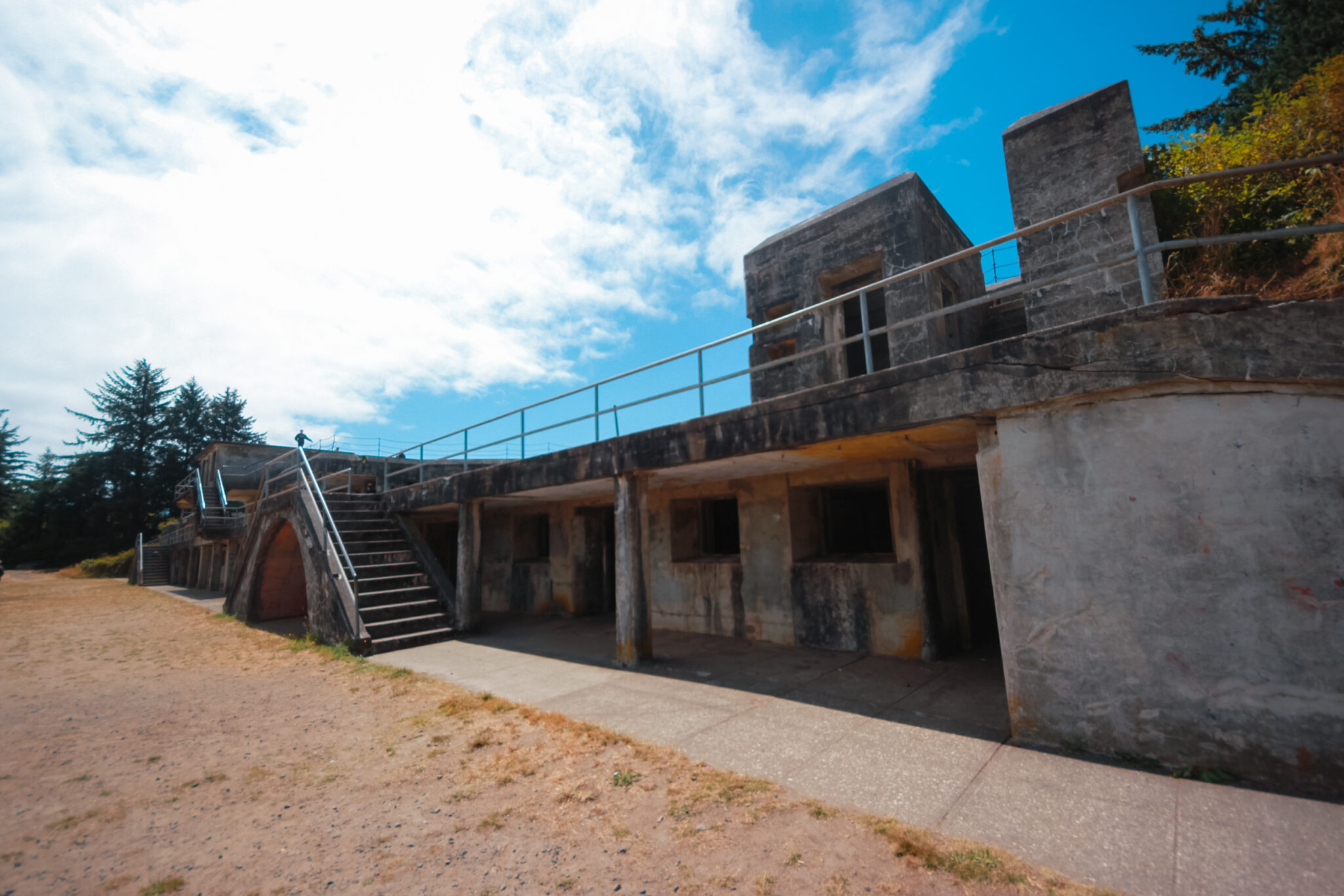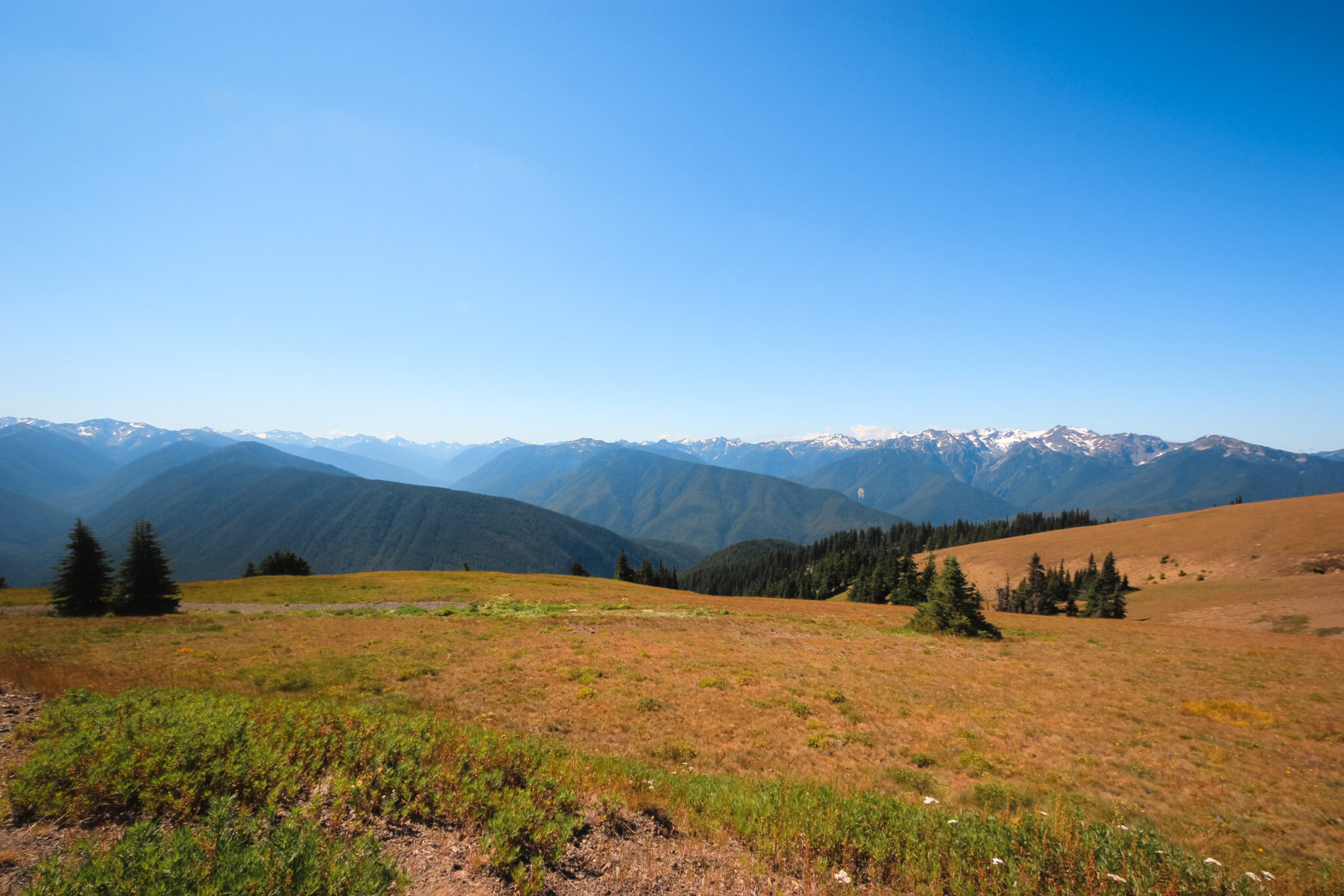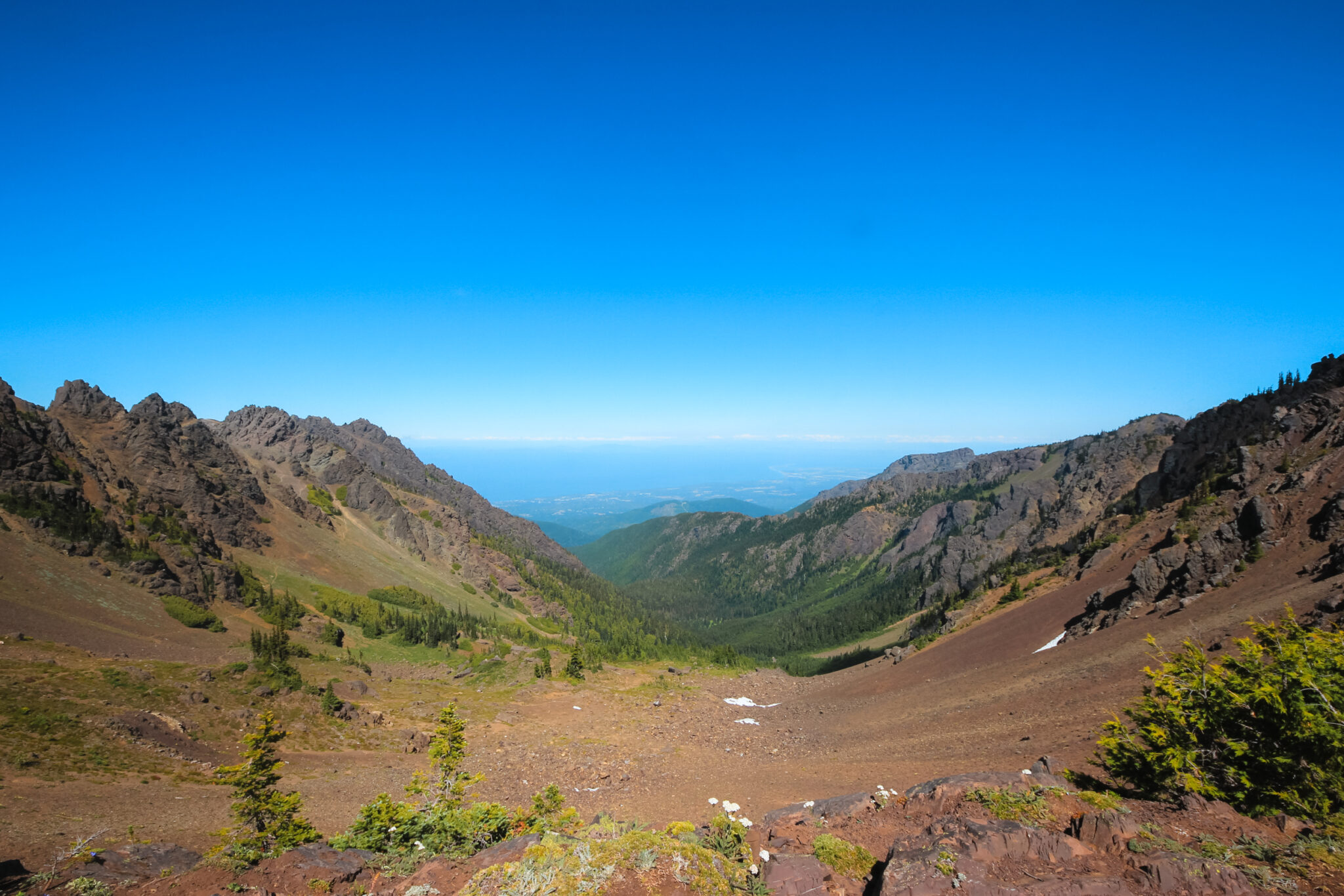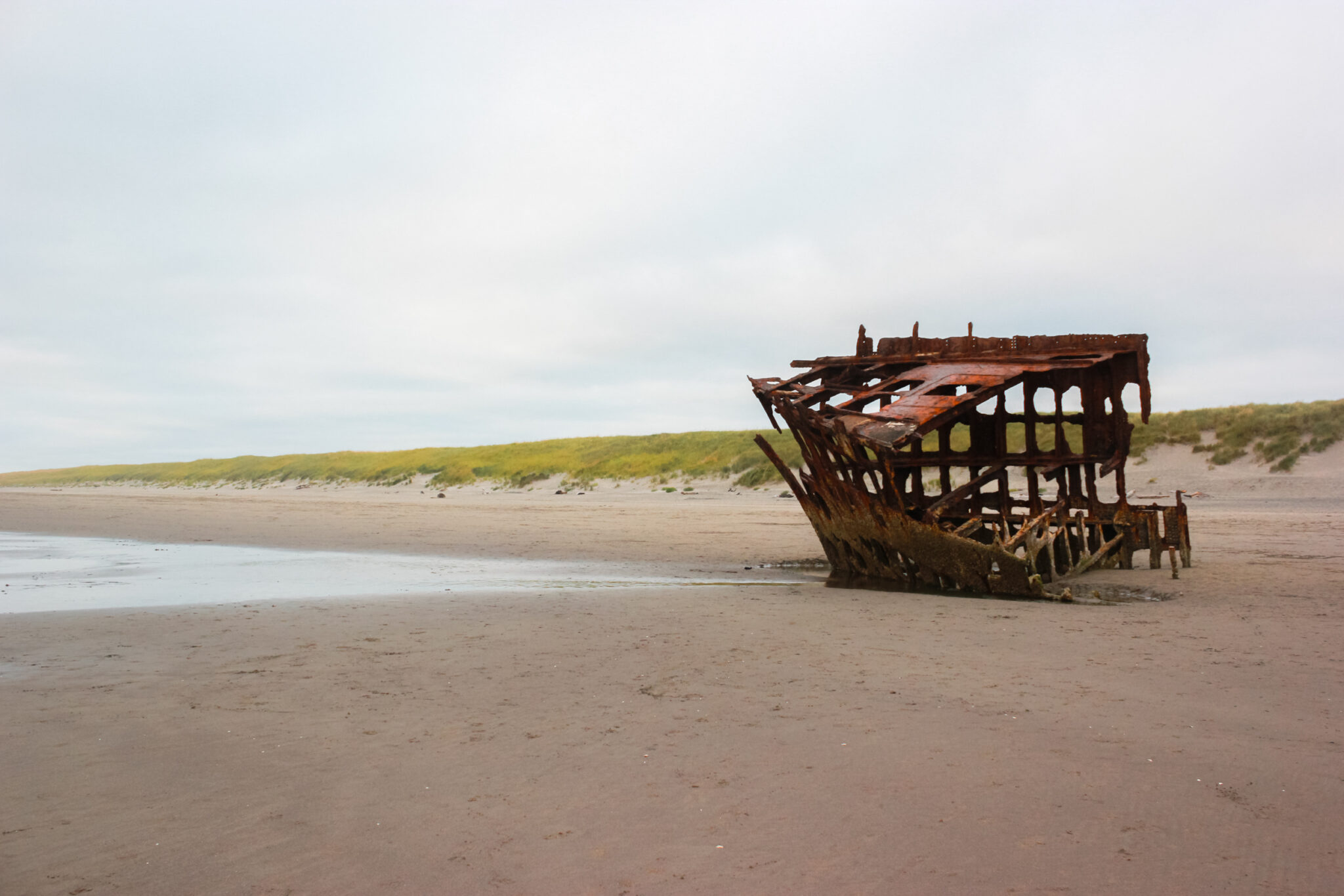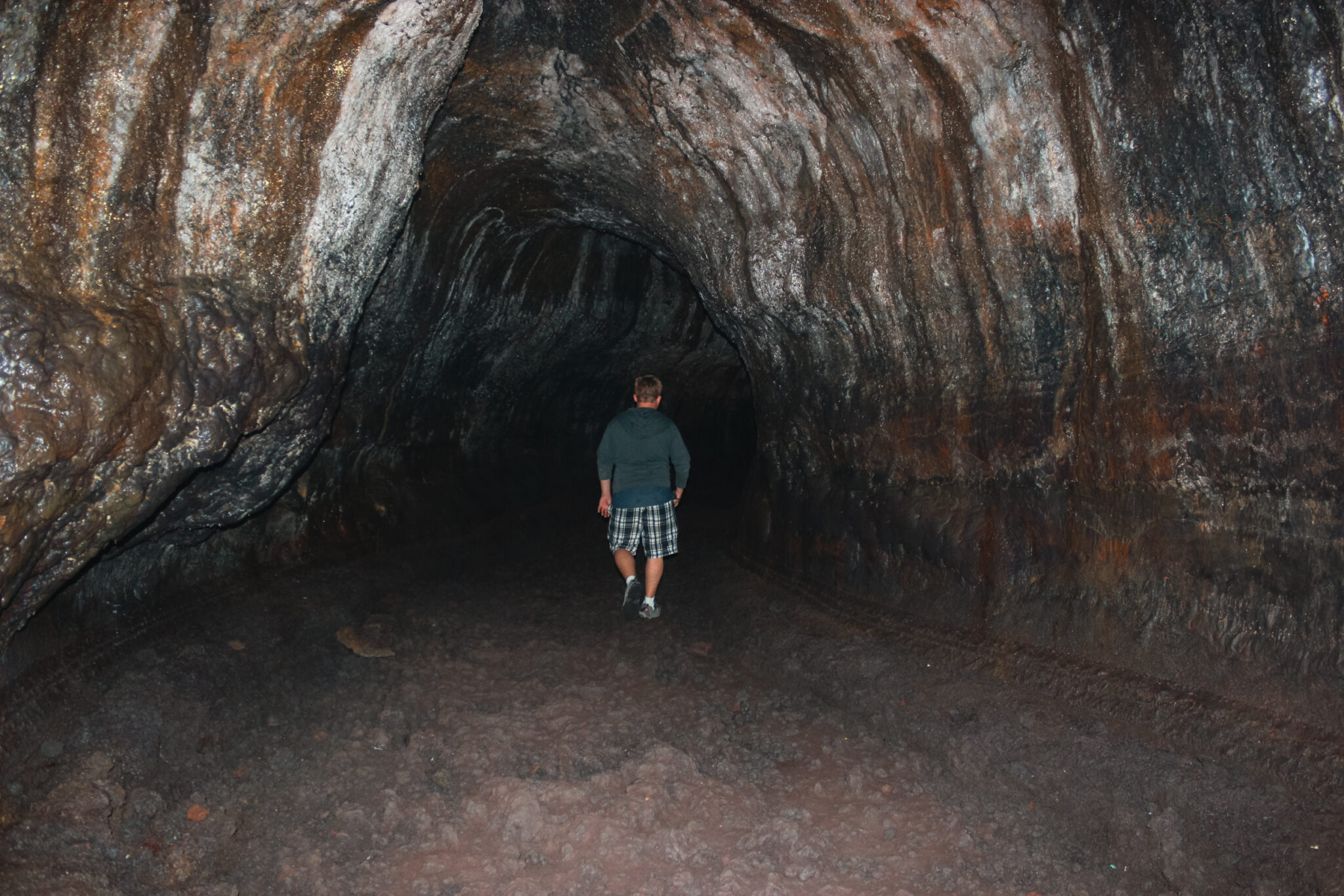10 Hiking Essentials to Always Carry
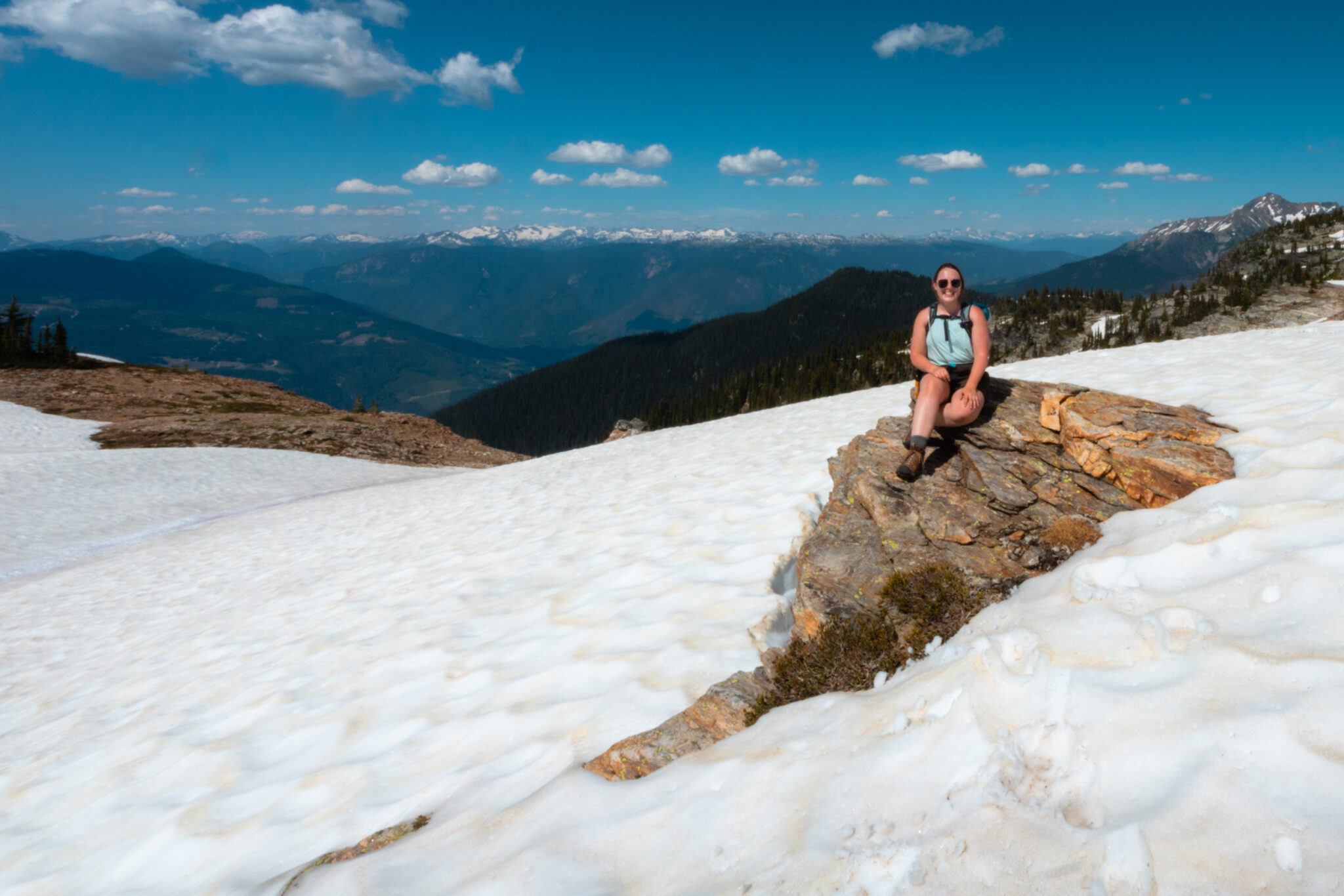
Hiking can be a little daunting with all these gear lists telling you what to carry and how to stay safe. And maybe you’re thinking, do I really need all that stuff?
I totally get it, it gets to be a bit much and it’s easy think you can just ignore it all, right? While I 100% believe hiking doesn’t need to be so overwhelming, it is important to be prepared when you’re outdoors. Honestly, you’ll probably never use half of these ten hiking essentials, but it’s better to be over-prepared than under.
The thing is, you just don’t know when something shitty is going to happen and when you’re in the mountains, shitty can get dangerous real fast.
I know these hiking essentials can feel like a lot, but you’ll feel a lot more comfortable when you know you’re prepped for the worst. Always double-check your bag before you head out to make sure you have everything — it’s a little too easy to forget something at home and that’s when you’d actually need it.
What Are the 10 Hiking Essentials?
So, are you wondering what gear you’re gonna be carrying around?
To give you a bit of background, the original ten hiking essentials were created by The Mountaineers in the ’30s. The list originally included individual items, but it’s evolved over the years and today it’s ten categories.
Although the categories themselves are fairly easy to understand, figuring out what gear to get is a little harder. The categories are: navigation, sun protection, insulation, illumination, first aid supplies, fire, repair kit and tools, nutrition, hydration, and emergency shelter.
Let’s dive into those categories.
1. Navigation
When you’re new to the outdoors, the thought of navigating in the backcountry can be a bit intimidating. But that’s why it’s all the more important to learn about it and practice your navigational skills. That way, you can be self-sufficient, stay safe on the trails, and not have to rely on others for your own safety.
Here are a few things that’ll help you on your navigational journey:
Trail Map
When I’m hiking, I like to bring some sort of physical map. I know it’s easy to rely on apps, but phone batteries can be a little too unreliable for my liking. Topo maps are great for specific trails, especially if those trails have lots of forks. You can either print out or buy a map online, and bonus points if it’s waterproof.
My favourite trail maps are Backroad Mapbooks and National Geographic.
Compass
I’ll be honest, my compass is one of the things I just carry around — I’ve never actually used it for navigating. It’s more of a last resort if everything else fails. Luckily, compasses weigh next to nothing and take up little space, so it’s easy to bring it along. Before you head out on your hiking adventure, make sure to practice up on how to use your compass.
If you’re in the market for a compass, the SUUNTO MC-2 Compass is my favourite. A more affordable option is the Brunto TruArc 3.
GPS
GPS’s are basically the holy grail of navigation! Not only do I feel a lot more comfortable navigating, I looove all the data my GPS gives me. I know lots of people don’t hike with a GPS, but there are so many options and it’s such an easy way to keep yourself safe, that there’s really no reason not to.
Phone apps are a great way to start using a GPS. They’re an easy, inexpensive way to navigate outdoors. Alltrails and Gaia are two of my favs — the premium versions both allow you to download maps. GPS apps are great for day hikes, but phone’s die quickly and are quite fragile, especially when you’re out adventuring.
If you do lots of hiking or backpacking, you’ll likely want to upgrade to a heavier duty, handheld GPS such as the Garmin 64st.
I just got a Garmin inReach Explorer+ based on the recommendations of other backpackers. It’s on the pricier side, but it has GPS and SOS satellite communicator all-in-one! An SOS communicator is so important when you’re heading into the backcountry in case you ever find yourself in an emergency situation. You can certainly buy the two devices separately, but I prefer having one.
2. Sun Protection
I don’t want to hear about “how good your tan is” or that “you never get sunburnt”. I’m not necessarily into slathering yourself in sunscreen — the sun does have benefits — but when you’re outside for hours, you do need to be sun smart.
Even if you think you don’t need much protection because your hike is only an hour, it could easily end up being longer and the sun has a pesky way of wearing you down.
Sunglasses
I basically live in sunglasses on sunny days, but I know it’s easy to forget to bring them along on hikes. There’s a fine balance between allowing your eyes to soak in some beneficial sun rays and unnecessarily tiring them out.
My favourite sunglasses are the SOJOS Mirrored and Pela Dian. The SOJOS aren’t really outdoor sunglasses, but I love them… plus, they’re cheap. The Pela Dian sunglasses, on the other hand, are more outdoorsy but more expensive (for good reason). The Pela sunglasses are sustainable and eco-friendly, which is why I originally tried them!
Sunscreen
I’ll be honest, over the last few years my thoughts on sunscreen have changed quite a lot. I’m no longer into slathering myself in sunscreen at all hours of the day.
The sun has lots of health benefits, plus I don’t love how many chemicals are in a lot of sunscreens (but that’s a rant for another day). But when you’re outside for hours at a time, especially if it’s the hottest part of the day, you do need to be sun smart so you don’t get burnt.
Sunscreen can be pretty harmful to the environment and humans, though. Watch out for sunscreen that contain Oxybenzone and Octinoxate. Choose a natural, rub-on sunscreen if you can. I love All Good’s Reef-Friendly sunscreen (it’s a little expensive but worth it).
Sun Protection Clothing
Clothing might not be your first thought for sun protection — or, at least, it wasn’t for me when I first starting hiking and before I learned more about sunscreen.
Luckily, there are plenty of lightweight clothes that have built-in UV protection. How awesome!
When you’re buying clothing specifically for sun protection, check its ultraviolet protection factor (UPF) rating to see how good it is at blocking the sun’s rays. In addition to lightweight clothing, always wear a hat. A hat with a full brim is wonderful at protecting your beautiful face from the sun.
3. Insulation
When you’re planning your hiking outfit, it’s important to think about your layers and what clothing you need to stay warm. Weather in the mountains can, and often does, change rapidly and unexpectedly.
When you’re deciding what to bring, think about the worst realistic situation you might find yourself in. What would you need to stay warm if you had to remain in one place for a long time?
Base Layer
Choose your upper base layer depending on the weather you’ll be hiking in. It doesn’t have to be fancy, a tank or tee works great. If you wear a long sleeve, make sure it’s light and breathable.
I have lots of different base layers and some of my favourite brands are Patagonia and Lululemon.
Mid Layer
When you’re deciding what mid-layer to bring, consider where you’re hiking. If you’re gaining a lot of elevation, it’ll probably be colder at the top. Choose a light, fleece, or down jacket as your mid-layer.
I have a Better Sweater from Patagonia, a down jacket from Costco, and a light jacket from The North Face that I switch between. One day I’ll upgrade to a Nano Puff from Patagonia.
Outer Layer
If you’re hiking somewhere where it’s super cold (or might get very chilly), it’s a good idea to bring a heavier-duty down jacket. Down packs small, so throw it in your backpack just in case.
I don’t actually have a heavy down jacket because I haven’t had a need for one yet, but I’ve heard great things about the Patagonia Down Sweater Jacket.
Rain Layer
It’s never a bad idea to pack a rain jacket, especially if you’re hiking somewhere that’s known for it’s rain (like the PNW). Getting all of your clothes wet is a sure fire way of having a terrible hike.
I have a light rain shell from Black Diamond and absolutely LOVE it.
Gloves
If it’s chilly out, I bring two pairs of gloves. I have a thick, insulated pair and a thinner pair for when I need more precision. Plus, this way if one pair gets too wet I’m not stuck with freezing hands.
Leggings or Lightweight Hiking Pants
I usually hike in leggings, but sometimes I’ll wear joggers or lightweight, breathable pants. Sometimes I’ll wear shorts, but I like long pants because I don’t have to worry as much about ticks or getting sunburnt. If it’s a little chilly, I throw on a pair of a thermal long johns.
I hike almost exclusively in my Lulus or Patagonia Happy Hike Pants.
Hat or Toque
9 times out of 10 I wear a hat when I’m hiking. It keeps the sun off my face and scalp, as well as out of my eyes. Plus, if my hair’s looking a little worse for wear, it covers that craziness up.
If it’s cool out, I always bring along a toque (beanie for you non-Canadians) to keep myself warm.
Investing in a nice quality toque, preferably one with a warm lining or made of wool, can make a world of difference. Bring a wool buff so that you can cover your mouth and nose when it gets too chilly.
Wool Socks
The right socks are soo important when you’re hiking! Something so simple, but often overlooked. Wool socks help keep your feet dry, which is a great way to prevent blisters. If you’re going on a long hike, bring two pairs so you can swap them when you feel your feet getting a little sweaty.
My favourite wool socks are Darn Tough, but I also like Wigwam and Smartwool.
4. Illumination
Every time I hit the trails, even day hikes, I bring some sort of light. True, it’s usually just one of those things I carry around, but it can be a life saver if something were to happen and I had to hike back in the dark. Remember to always bring an extra set of batteries (most take AAAs)! A flashlight it useless if it’s dead.
PS: Your phone’s flashlight is not a light source. It’s weak and drains your battery quickly.
Headlamp
I loooove headlamps because they’re handsfree and lightweight. I just got a Petzl headlamp and love it! It’s super helpful when I’m camping, too.
5. First Aid Supplies
It’s really important to carry a first-aid kit in your pack and know how to use it. The size of your first-aid kit will depend on the number of people in your group, how long you’re hiking for, and the risk involved in your adventure.
First Aid Kit
It doesn’t have to be big, just the basics to help with common trail ailments like blisters, headaches, or bug bites. I’ve always bought premade kits, but you could make your own.
Before you head out, make sure everything is up-to-date and not expired.
6. Fire
When you’re putting together your backpack, a waterproof fire starter is easy to overlook. I know it was one of the last things I ever bought on this list.
After all, it’s not the most obvious, but it’s so important for emergencies. There are lots of different options for fire starters, which I’ve gone over below:
Waterproof Fire Starter
The right tools make starting a fire a hell of a lot easier than banging two rocks together. My favourite option is the Light My Fire stainless steel striker. I don’t have to worry about it getting wet, it weighs next to nothing, and it’s good for up to 12,000 strikes. It’s great for starting campfires, stoves, and emergency fires.
Waterproof Matches
Another option you could use are waterproof matches. Splurge for quality matches — gas station matches don’t usually hold up well. Matches aren’t as durable as stainless steel fire starters, but they’ll do the trick.
Arc Plasma Lighter
Finally, the last fire starter option you could bring is an arc plasma lighter. It’s basically like a butane lighter, but it’s waterproof, windproof, and rechargeable. It’s small and easy to throw in your bag for emergencies.
7. Repair Kit & Tools
Sometimes things break on the trail and you’ll need to Macgyver your gear. Bringing the right tools will save not only your time and energy, but also your sanity.
Knife
A good knife or multi-tool is so versatile that it should be in your backpack every time you hike. They’re handy for repairing gear, preparing food, and building fires and shelters.
I was on the search for a good knife for awhile, then I was recommended the Trango Piranah Knife and I love it! It’s lightweight and cuts through basically everything.
Repair Kit
Another piece of gear to throw in your backpack is a small repair kit. Your kit should include duct tape, zip ties, safety pins, cordage, and fabric repair tape. You should also include repair parts for your gear (water filter, tent, stove, etc). The more remote the area you’re exploring, the more in-depth your repair kit should be.
8. Nutrition
It should be obvious to always bring food on your hike. Going hungry isn’t fun. You need to be prepared to deal with a delay or emergency every time you go hiking. Bring enough food for at least one extra day — or more if you’re going on a long trek.
Enough food doesn’t mean you need to pack full meals for breakfast, lunch, and dinner. Instead, bring things like high-energy bars and dry food like nuts or jerky. You just need enough to keep yourself going.
Food & Snacks
There’s no hard and fast rule for what food to bring on your hike. I like Clif Bars, Pro Bars, and RX Bars for snacks. If it’s a longer hike, I usually bring some fruit and veggies or maybe a sandwich.
9. Hydration
I looove water. People always look at me weird when I say it’s my favourite drink. Too often I see people hiking without any water and I just want to shake them! Staying properly hydrated on your hikes is sooo important.
Water Reservoir
Water reservoirs are hands down my favourite way to bring water on hikes! They make it super easy to carry lots of water and stay hydrated. The only time I don’t bring mine is if it’s freezing out, because the water could freeze in the hose.
Water reservoirs come in all sizes, but I recommend one that’s at least 3L with a mouth cover. I’ve had the HydraPak 3L for years and love it!
Water Bottle
I’m a water fiend, so it’s no surprise I like to play backup to my HydraPak with a water bottle.
Sometimes water reservoirs leak and you need to transfer your water (although I’ve never had to do this). If you need to use electrolytes, it’s better to add them to a bottle than your entire water reservoir. And finally, you can use a bottle to filter your water if you run out.
Emergency Water Filter
Even though I usually have enough water for a day hike thanks to my water reservoir and bottle, I also bring an emergency water filter and aqua tabs just in case. Especially if I’m going somewhere I haven’t been before.
Emergency water filters are likely something you won’t need to use, but they never hurt to have.
10. Emergency Shelter
Of all the ten hiking essentials on this list, emergency shelter seems the most dooms-day-prepper-ish, right? How likely is it really that you’re gonna be trapped on the mountain? Well, I hate to break it to you, but there’s always a chance when you’re in the outdoors. If you’re going on a short hike you know well, you probably don’t need to bring emergency shelter, but any other time you definitely should.
An ultralight tarp, bivy sack, emergency blanket, or even a large plastic bag work as emergency shelter. If you can, pick a highly visible colour like orange so people are more likely to spot you.
Ultralight Tarp
An ultralight tarp folds up small and weighs next to nothing, but in an emergency it can keep the rain and sun off of you.
Bivy Sack
Bivy sacks are sorta like a tent and sleeping bag all-in-one. It’ll keep you dry and safe through the night in case of an emergency on the mountains. They’re lightweight and small, so they’re easy to throw in your bag and forget about.
Emergency Blanket
I carry an emergency blanket on all my hikes. I’ll upgrade to a bivy or tarp once I start going on harder hikes, but for now I feel safe with an emergency blanket. They trap body heat and repel water, and are small and lightweight.
